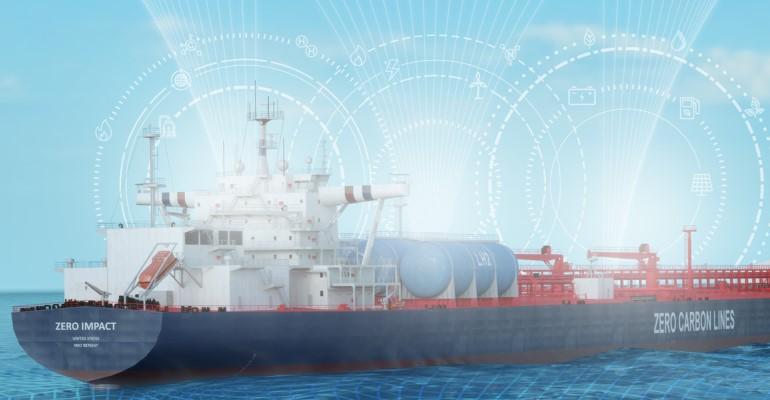“Carbon capture is going to be a key transformational technology for shipping to achieve net zero emissions by 2050. It will be critical to addressing the challenge before us, which is the sheer gradient of the curve. At the moment we can only see the outline of a solution to get us to 2050. But it is clear already that net zero cannot realistically be delivered without efficient carbon capture and storage technology.”
Speaking at Posidonia, Wiernicki said speed will be of the essence to hit the 2050 target.
“The speed of the transition to net zero will be driven by the speed of the development of the carbon and hydrogen value chains. In order to get to net zero by 2050 we will need 10 times more renewable energy than we have in place today and extensive carbon capture capabilities,” he said.
“The hydrogen value chain includes all activities related to the production of green and blue hydrogen and the conversion of hydrogen into other low- and zero-carbon fuels as a carrier, such as for methanol, methane and ammonia.”
Hydrogen and carbon value chains are a main theme in ABS’ recently-published Zero Carbon Outlook publication, which cites IPCC and IEA data that CCS will need to scale from 50m tonnes of CO2 in 2020 to 800m tonnes by 2030 and more than 5,000m tonnes by 2050.
“Shipping’s new fuel story is only just starting to be written. The next ten years will determine which fuels will have a seat at the table based on their availability and scalability, safety, pricing, infrastructure maturity, ship type and trade routes.”
As the IMO gathered for MEPC 78, Wiernicki urged regulators to look again at SOLAS and deliver clarity on the requirements and details of the Carbon Intensity Indicator (CII). CII enters into force on January 1 2023, but rate of carbon reduction are yet to be set form beyond 2026.
“We are in the early innings of a decade of change. CII is going to start to bring the industry together and then the introduction of market-based measures is going to redefine commercial relationships. Meanwhile, regulators have some homework to do. The industry needs consistency, and the challenge now is to lock down the CII code. Is it tank-to-wake or well-to-wake? We need to know. There are some big decisions hinging on that issue. At the same time, existing regulations such as SOLAS must be modernized,” he said.
The full report is available online here: ABS - Setting the Course to Low Carbon Shipping: Zero Carbon Outlook
Copyright © 2024. All rights reserved. Seatrade, a trading name of Informa Markets (UK) Limited.
Add Seatrade Maritime News to your Google News feed.  |

